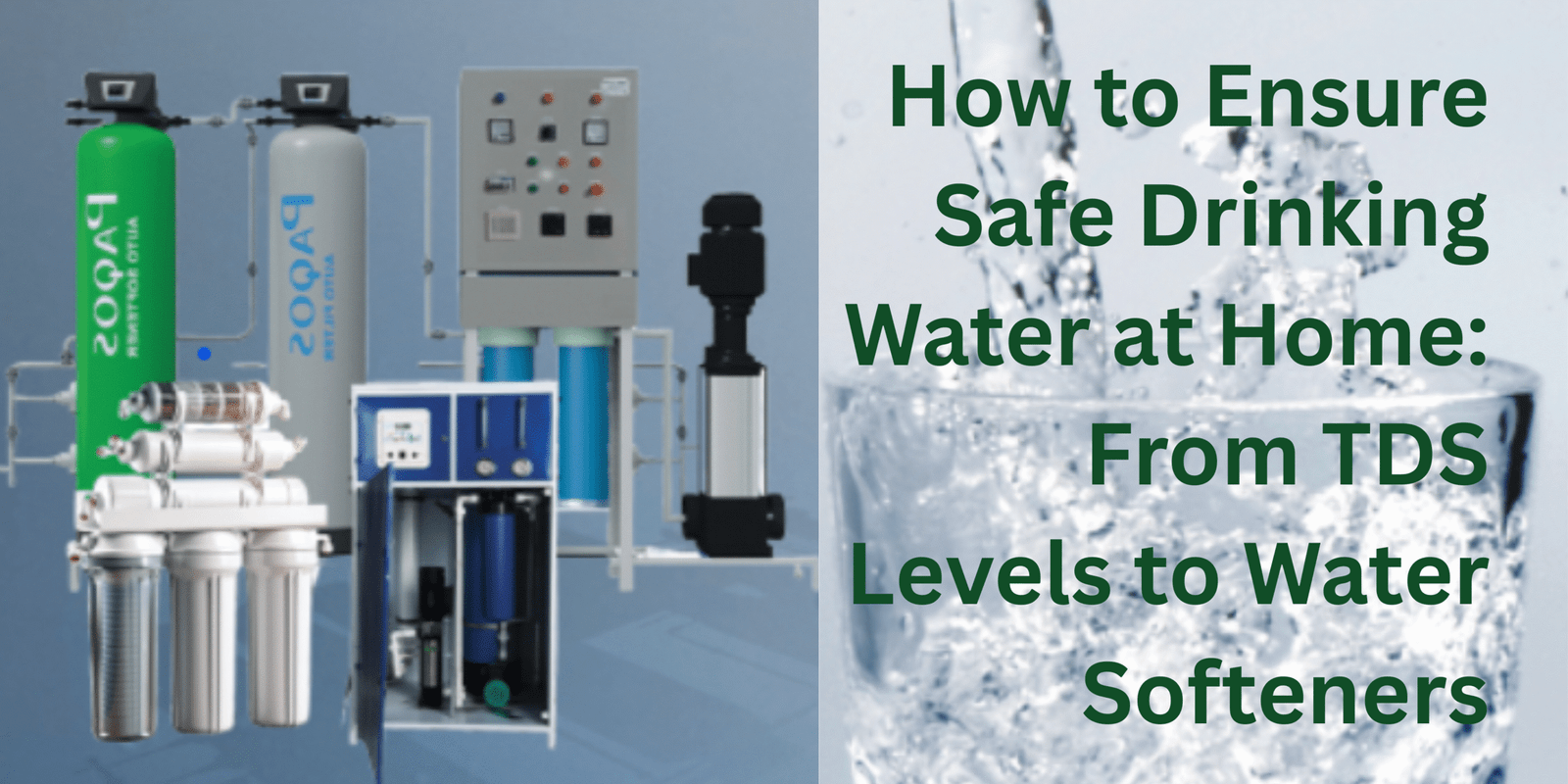Clean, safe drinking water is something every household needs—but achieving that isn’t as simple as just turning on the tap. With concerns around water hardness, dissolved impurities, and mineral content, it’s important to understand how to test and treat your water effectively.
This blog covers essential aspects of home water quality—how to identify ideal TDS levels, the difference between hard and soft water, the use of softeners, and whether technologies like alkaline machines and RO systems are the right fit for your needs.
Understanding TDS in Water
TDS stands for Total Dissolved Solids, a term used to describe the total concentration of dissolved substances in your water. These can include calcium, magnesium, chlorides, sulfates, and even trace amounts of heavy metals or organic material.
While some dissolved minerals are essential for human health, too much—or too little—can affect taste, water hardness, and safety.
What Is the Ideal TDS Range for Drinking Water?
According to WHO and BIS guidelines, the TDS range for drinking water ideally falls between 50 and 300 ppm (parts per million). Here’s a basic overview:
| TDS Level (ppm) | Water Quality |
|---|---|
| < 50 | Lacks essential minerals |
| 50 – 150 | Excellent for consumption |
| 150 – 300 | Good and balanced |
| 300 – 500 | Acceptable with caution |
| > 500 | May require filtration |
The Role of RO Purifiers
RO (Reverse Osmosis) purifiers are designed to reduce high TDS levels and remove contaminants like lead, fluoride, and arsenic. If you’re using groundwater or borewell sources, RO systems are particularly helpful in managing the mineral content of your water.
However, it’s important to monitor your RO water TDS level. Water that’s too low in TDS (under 50 ppm) may lack essential minerals, which is why many modern RO systems come with a mineralizer or TDS controller to restore balance.
What Is Hard Water and Why Is It a Problem?
Water is considered “hard” when it contains high amounts of calcium and magnesium. It’s not harmful to drink, but it can cause numerous household issues:
-
Limescale buildup in pipes, heaters, and appliances
-
Dry skin and dull hair
-
Increased soap consumption
-
Stains on bathroom fittings
In regions with naturally hard water, these issues are common and often require additional treatment methods.
Why You Might Need a Hard Water Softener
To address these concerns, many homeowners install a hard water softener. These systems work by replacing calcium and magnesium ions with sodium or potassium ions, effectively converting hard water into soft water.
A good softener not only protects your plumbing and appliances but also improves the feel of water on skin and clothing. They’re typically installed at the main water supply line to ensure soft water throughout the home.
Alkaline Water: A New Trend in Health-Conscious Homes
In recent years, alkaline water machines have gained popularity for their potential health benefits. These machines adjust the pH level of water, making it more alkaline (above pH 7), which some believe helps neutralize acid in the body, boost hydration, and improve metabolism.
While scientific consensus on these benefits is still forming, there’s no denying that alkaline water tastes smoother and is often preferred by athletes and fitness enthusiasts.
If you’re already using an RO system, pairing it with an alkaline filter or machine can help rebalance pH and restore essential minerals lost during the purification process.
How to Check Your Home Water Quality
Here are a few easy ways to monitor your water:
-
TDS Meter: A digital tool to check the water TDS level for drinking. It’s affordable and gives instant readings.
-
Hardness Testing Kit: These help detect calcium and magnesium content in water.
-
Water Testing Services: For detailed analysis, professional labs can test for contaminants, metals, and microbiological content.
Tips for Choosing the Right Water Treatment
-
Know your source – Borewell water typically has higher TDS and hardness; municipal water may have lower TDS but chlorine traces.
-
Choose based on TDS –
-
< 150 ppm: UV or UF filters
-
150–500 ppm: RO + UV + mineralizer
-
500 ppm: RO with TDS controller + softener
-
-
Maintenance matters – Regular servicing ensures filters and softeners continue to perform efficiently.
-
Don’t over-purify – Water that’s too pure (very low TDS) isn’t ideal for long-term consumption.
FAQs:
Q1. What should be the ideal TDS level in RO water?
An RO water TDS level between 80–150 ppm is considered ideal—safe for consumption and containing essential minerals.
Q2. Is hard water bad for health?
No, hard water isn’t harmful to drink, but it can be tough on your skin, clothes, and plumbing. It’s better to soften it for household use.
Q3. Can I use an RO system with a hard water softener?
Yes, and it’s recommended. A hard water softener protects your RO unit from scale buildup, extending its lifespan and improving efficiency.
Q4. What’s the right TDS range for drinking water?
Between 50 – 300 ppm is optimal. Below 50 may lack minerals; above 500 may need purification.
Q5. Are alkaline water machines worth it?
If you’re health-conscious and want better-tasting water with a higher pH, an alkaline water machine is a great addition—especially if you use RO filtration.
Conclusion
Good water is the foundation of good health. Whether you’re checking your TDS range for drinking water, managing hard water issues, or exploring alkaline water options, the goal is to strike the right balance between purity and nutrition.
By understanding your water and investing in the right technology—like RO systems, hard water softeners, and alkaline machines—you can enjoy clean, safe, and great-tasting water every day.
